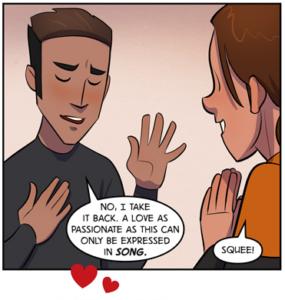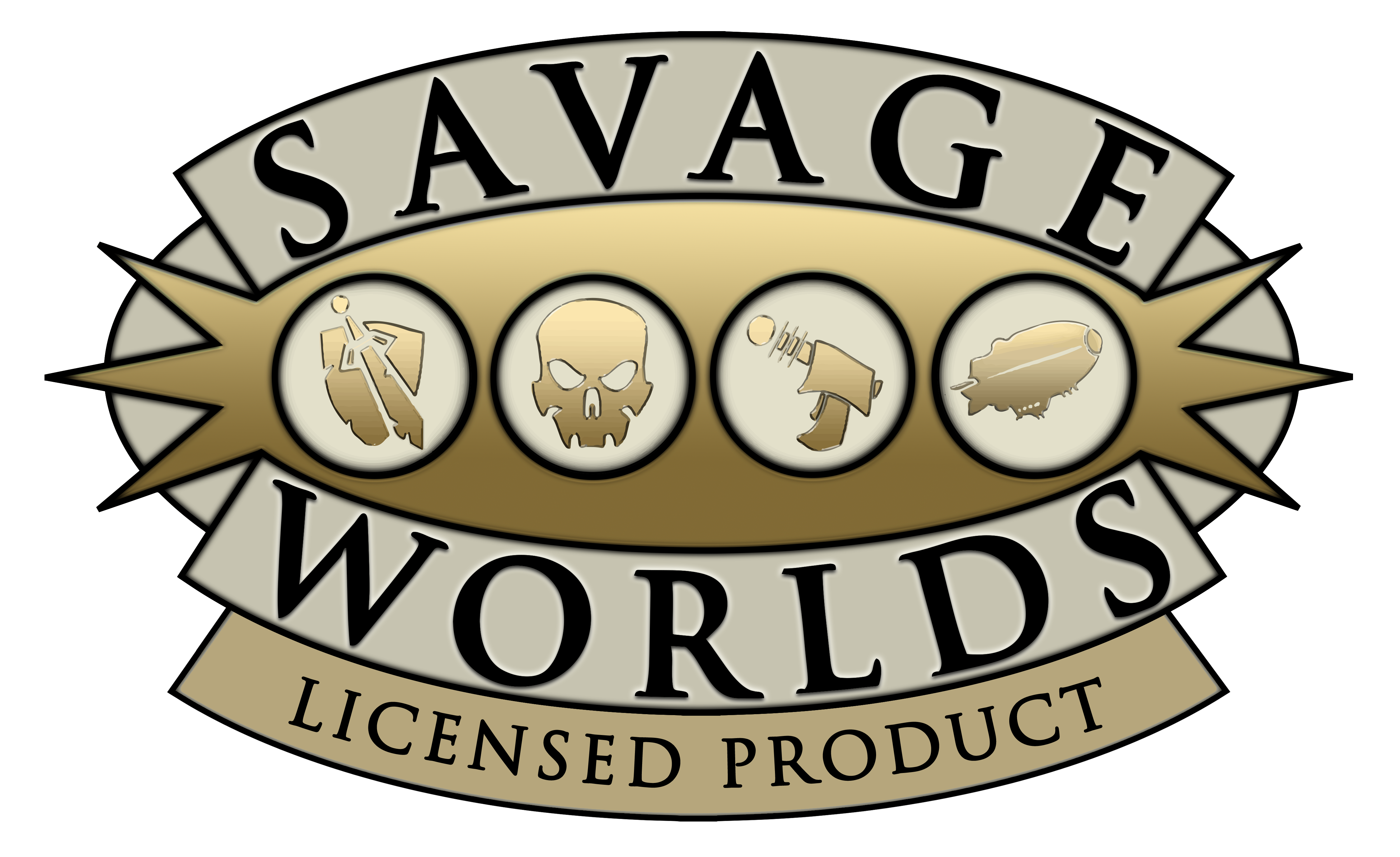A roleplaying game is (among other things) a social, verbal-based medium in which we construct a story cooperatively, which means most of the time we are required to tell other people what’s going on. A major point that tends to be missed, or even neglected, in many rule books (and in many parts of the gaming culture in general), is about the importance of storytelling. Or in other words:
 The way you tell a story is just as important as its contents
The way you tell a story is just as important as its contents
To paraphrase a well-known rule of thumb: Tell, don’t inform. Note the difference between the following interactions.
Rotem: During the downtime, Muna is making sure to keep fit by doing regular exercises.
That was informative but bland. Let’s add some details:
Rotem: During the downtime, Muna is focusing on doing the same good-ole’ moves and exercises her mother taught her. “Cliff Sliding”, “Wind Upon a Lake”, and other such semi-yoga-like poses and stuff. It keeps her fit!
That was better, and that’s how most groups would probably do it. But here’s an extra level you can get to, if you’re willing to give a little extra effort:
Rotem: The wind blows cold, and we see the sun rising above the mountains. Muna takes a deep breath, and keeps sliding her arms up, in a circular motion. The mountains might be Bogovian, but the practices are straight from her homeland, same good-ole’ moves and exercises her mother taught her. It’s a bit too cold to be doing these slow, focused yoga-like poses on the top of this hill, but after so many weeks of waking up to this routine, Muna grew accustomed to the cold. She always sneezes mid-way through “Mountain Standing Tall”, though.
This time we get a picture of a scene in our minds, making the description cinematic, engaging the imagination and not just providing information, detailed or otherwise. This narration describes a single event – a singular morning exercise – but by keeping it unanchored in a specific moment in time, and by telling us Muna has been “waking up to this routine” for “many weeks”, we still get all the information given in the previous examples. It’s a classic narrative technique.
Elements of Storytelling
Providing a story in an interesting way isn’t a matter of simply adding flourish to a description, so as to make it more detailed – although that’s, of course, a useful tool in storytelling. Instead, it’s roleplaying’s equivalent of cinematography – the art of transforming a story into a movie.
Now, the word “story” comes up a lot in this article, and this might seem to indicate that storytelling is especially relevant to the (somewhat rare) instances of gaming where a player is asked to tell a story by themselves, like in these interludes. But in fact, it’s relevant to any sort of interaction around the table. Consider the entire game to be one big story – multi-layered, open-ended, collaboratively made and rules-supported, but still, a story. It’s a telling of something fictional, and the act of telling itself deserves some attention.
Framing: What’s the medium?
A story can be told through the character’s eyes, or it can be told about her, in 3rd person.
Guy: Everyone inside the bar gets quite as Mac’s silhouette appears against the wall.
It can be a description of something that’s happening, without using any dialogue, or it can be all dialogue, as you’ll see in next week’s page, in which the whole tale is simply a letter Muna sends to her father.
It can be a poem; it can even be a lecture given by unrelated characters to an unrelated audience.
Nadav: Cool idea, yeah, you can do that trick. But first tell me, where did Mac learn to handle explosives like that?
Guy: We see a small training ground, with several explosives in the back. There’s this serious-looking drill sergeant standing before the rookies. “Alright soldiers, before you even approach the dynamite, let me tell you a cautionary tale about this stupid SOB that once broke both legs trying to be clever... “
Of course, you can also use an actual framing device.
Who’s telling this story? What parts do they emphasize? What mood do you want to set? What part is worth showing, if this was a movie, and from which angle? Frame your telling within these borders.
Delivery: The actual telling
The actual, physical way you deliver your story is a huge part of storytelling.
Control your tone and voice, switch between “in-character” voice and “narrating” voice. Don’t be afraid to clown around. Use dramatic pauses. Make sounds effects when appropriate.
Express yourself through body language. Lean back or forward, look directly at someone, or switch between everyone. Stand up, or use your hands.
Lily: [Leans forward, looking at everyone as if sharing a secret, voice low, scheming] I make my way toward the Situation Room. It’s this big, mostly high-tech room, [Spreading her arms wide, to show how large it is] where they keep the Crystal Database, on this holographic computer [bringing one hand forward, pointing, at something at the middle of the imaginary room she just framed].
Show and Tell
Investing in storytelling can be cool and fun; surprising and different; it keeps everyone attentive about the game; it gives you a way to express yourself; it gives you a way to express your character; and if even one of these things matches with your motivations for sitting at the table in the first place, well then, you should probably try it!
In next week’s post, I’ll give a few suggestions for interesting storytelling techniques – most, of course, based on well-established narrative and cinematic lore.



